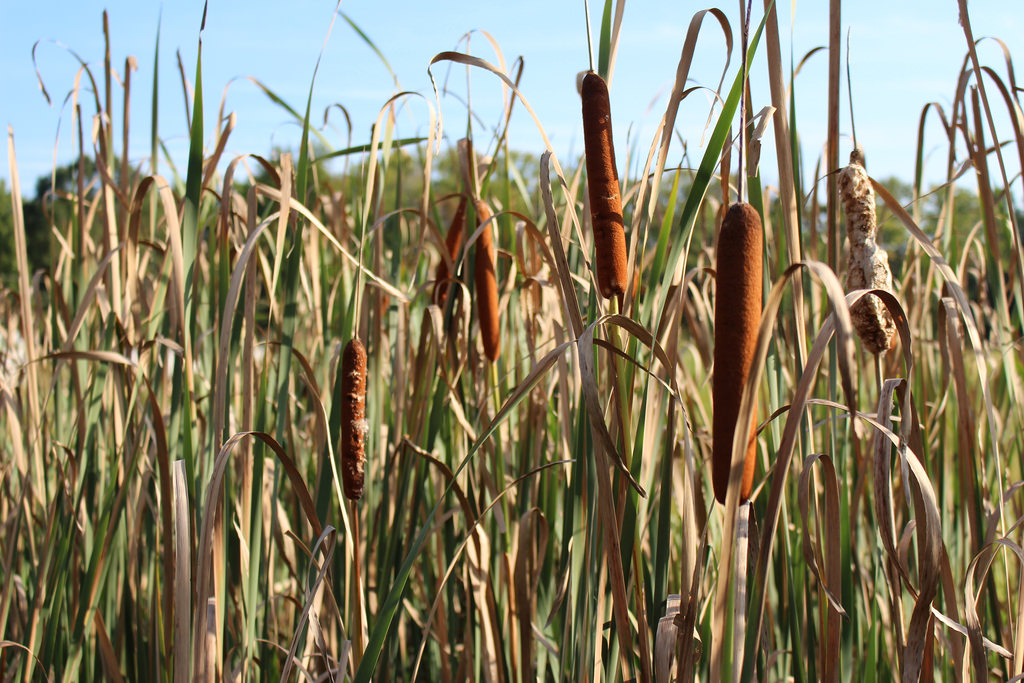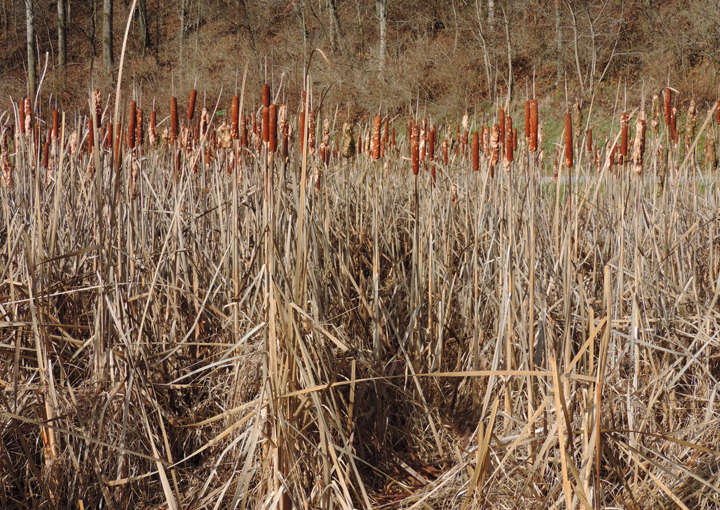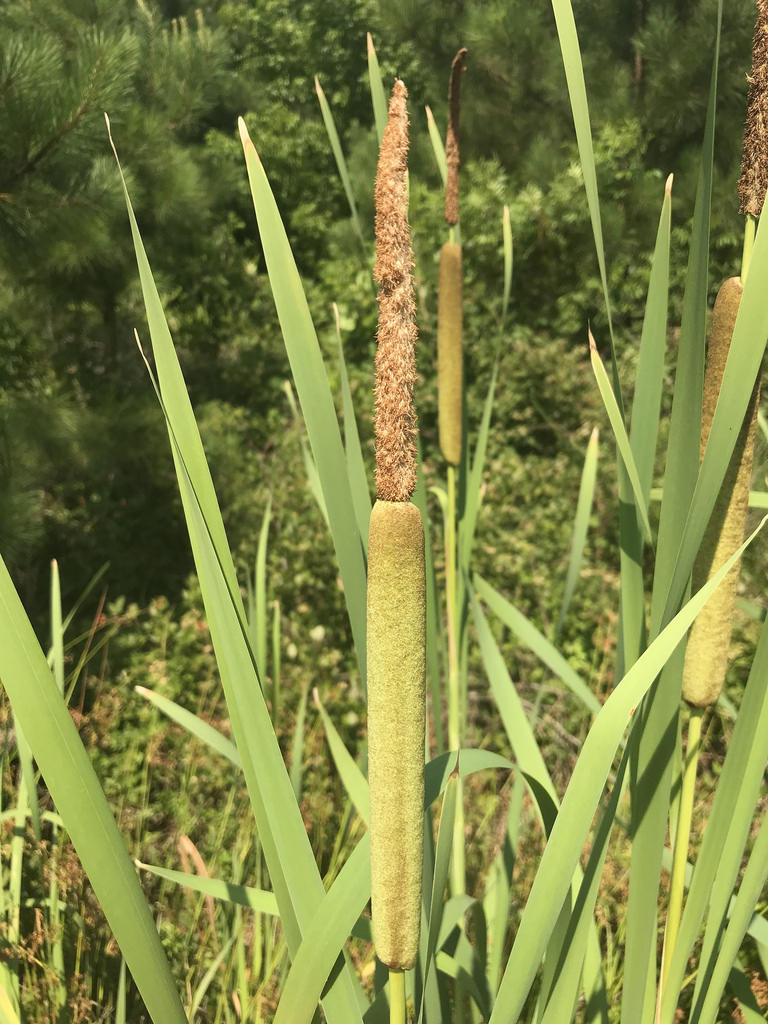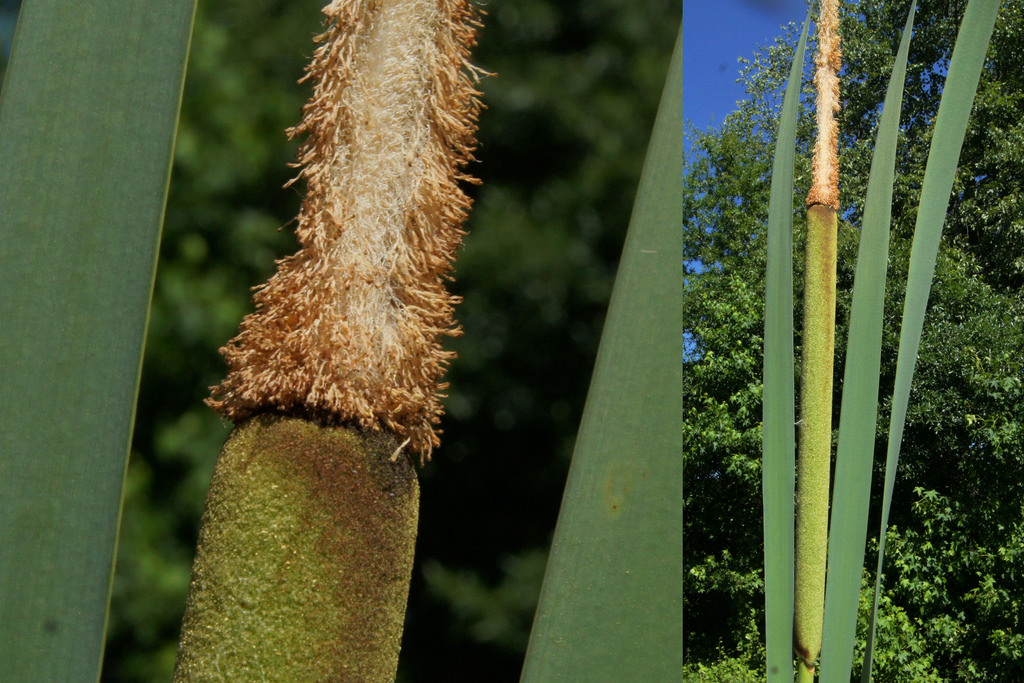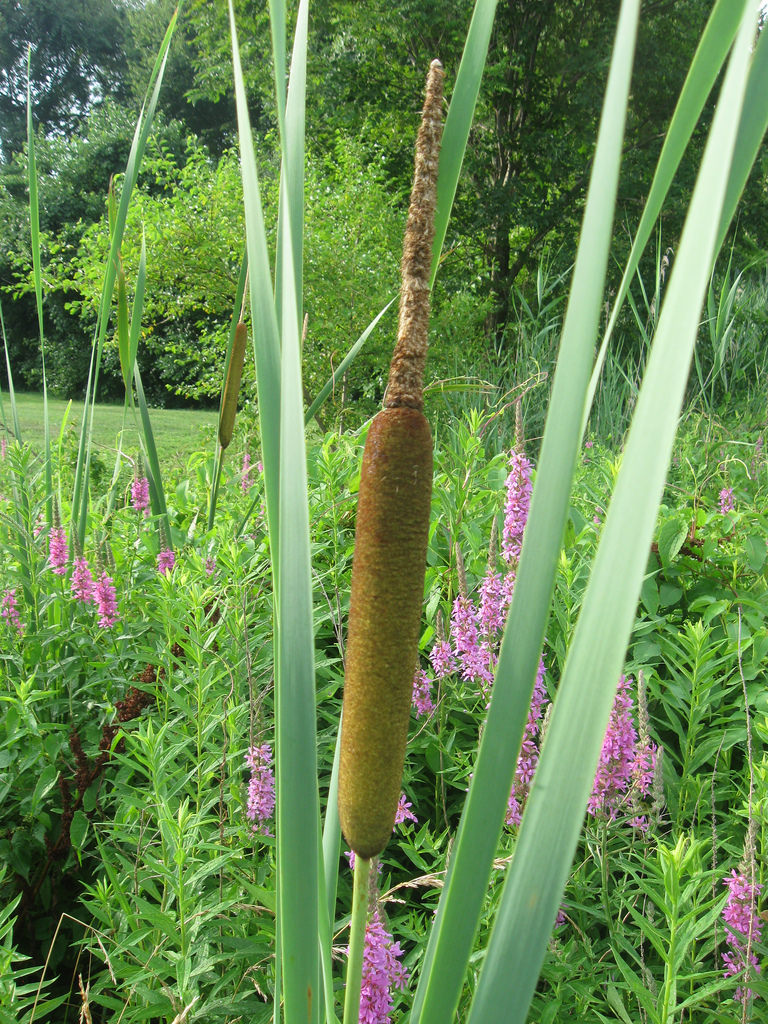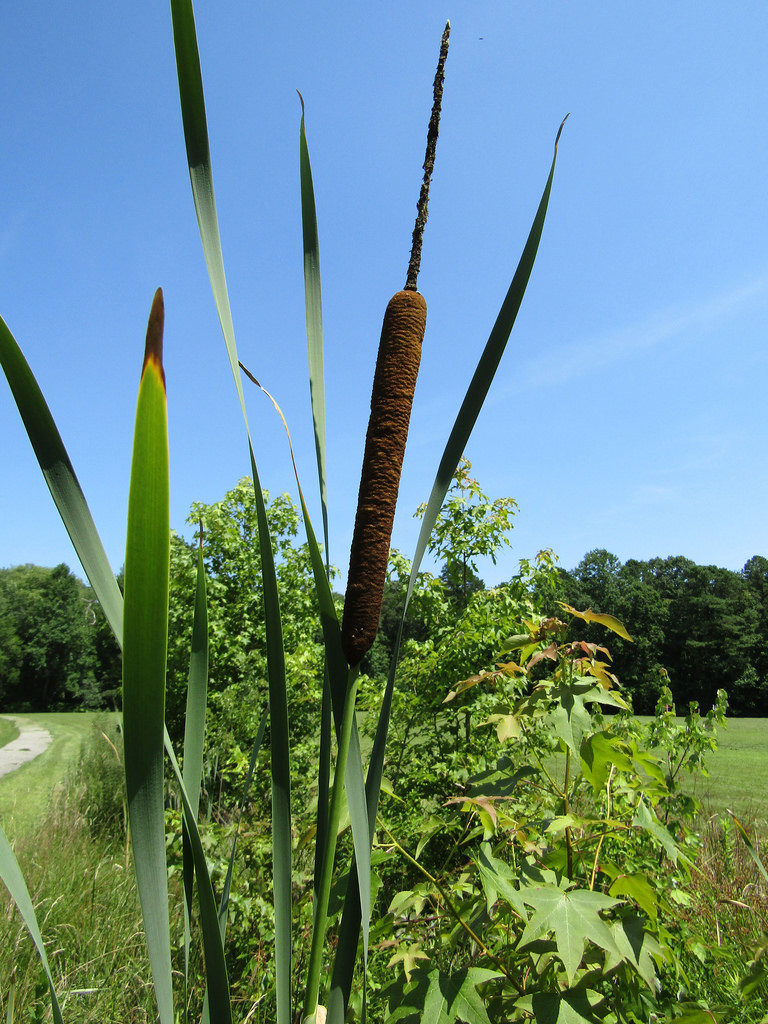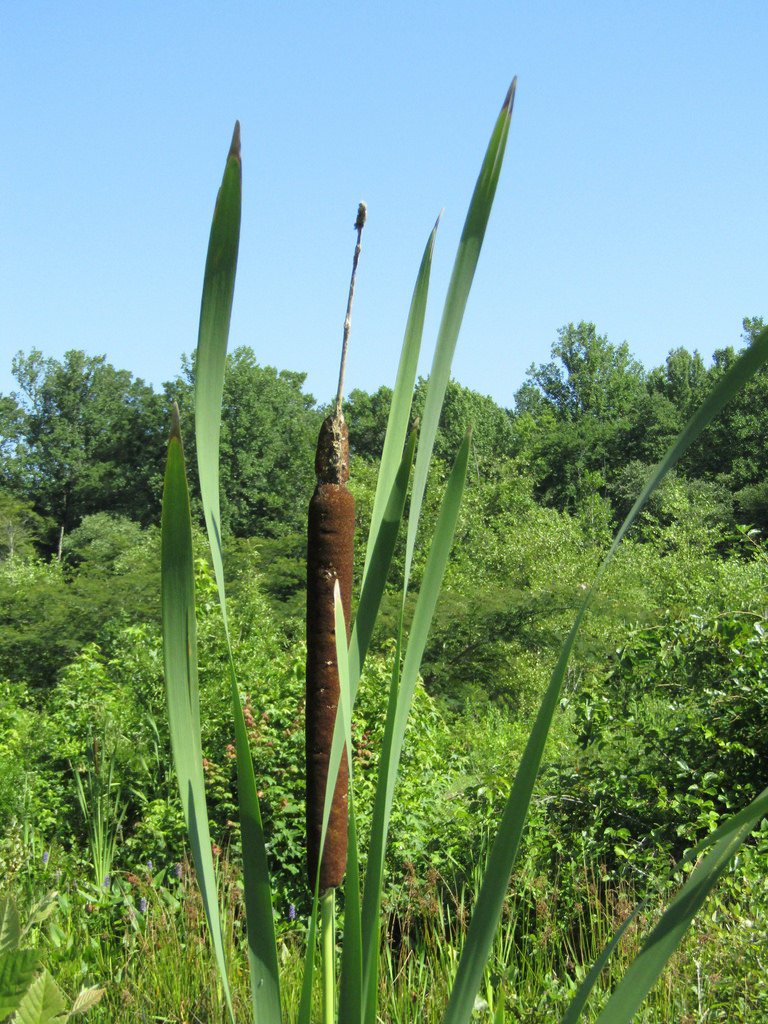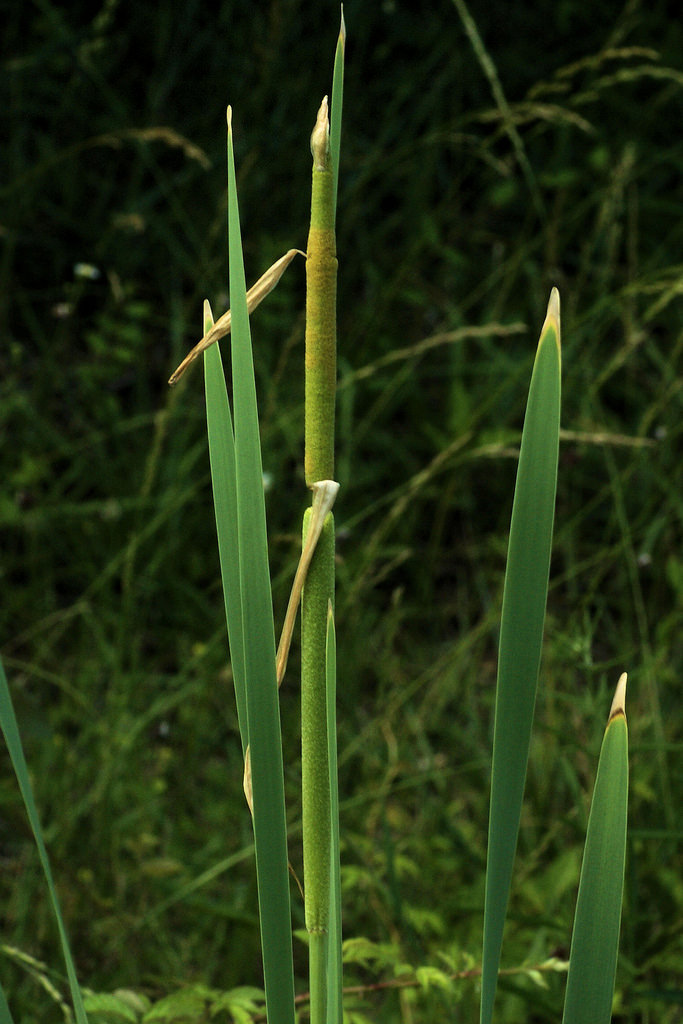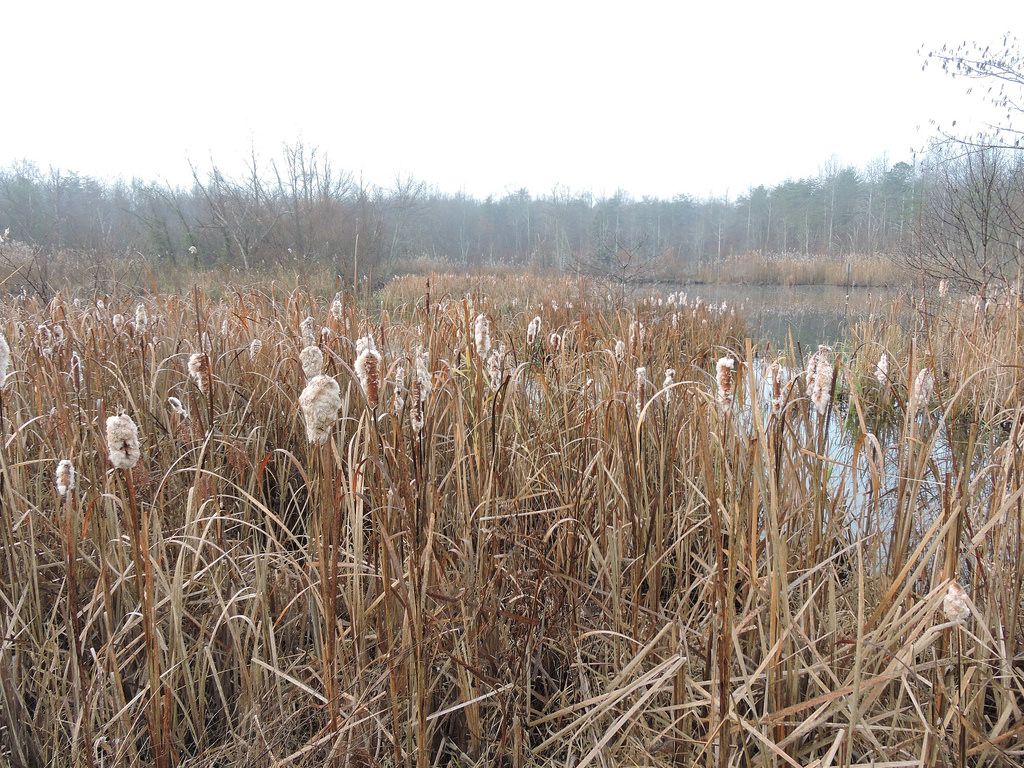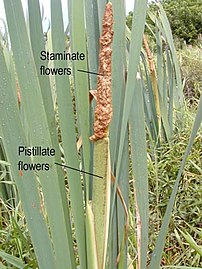Map Snapshot

























351 Records
Status
"Eurasia; North Africa; Newfoundland to Alaska, southward throughout most of the United States into Mexico" (Reed, 1964).
Seasonality Snapshot
Source: Wikipedia
| Typha latifolia | |
|---|---|

| |
| Mature seedhead | |
| Scientific classification | |
| Kingdom: | Plantae |
| Clade: | Tracheophytes |
| Clade: | Angiosperms |
| Clade: | Monocots |
| Clade: | Commelinids |
| Order: | Poales |
| Family: | Typhaceae |
| Genus: | Typha |
| Species: | T. latifolia
|
| Binomial name | |
| Typha latifolia | |
| Synonyms[2][3] | |
|
Synonyms list
| |
Typha latifolia is a perennial, herbaceous flowering wetland plant in the family Typhaceae. It is known commonly as bulrush[4][5] (sometimes as common bulrush,[6] to distinguish from other species of Typha); in North America, it is often referred to as broadleaf cattail, or simply as cat-tail or cattail reed.[7] It is native throughout most of temperate Eurasia and North America, and found more locally in Africa and South America. The genome of Typha latifolia was published in 2022.[8]
Other names
[edit]Typha latifolia is sometimes referred to as "great reedmace" (mainly an historical name,[9] but occasionally still in modern use[10]), common "cat-tail", "cat-o'-nine-tails",[citation needed] "Cooper's reed",[citation needed] or "cumbungi".[citation needed]
Description
[edit]Typha latifolia grows 1.5 to 3 metres (5 to 10 feet) high,[6][11] with leaves 2–4 centimetres (3⁄4–1+1⁄2 inches) broad. It will generally grow from 0.75 to 1 m (2 to 3 ft) of water depth.[citation needed] The foliage is deciduous, regrowing in spring and dying down in the autumn.[5]
The flowers appear in a dense cluster at the top of the main stem; they are divided into a female portion below, and a tassel of male flowers above. The female and male reproductive parts are contiguous, in contrast to other species, such as T. angustifolia, which has a 3-8 cm gap of bare stem between the female and male flowers.
Flowering is in June and July; following this, the male portion falls off, leaving the female portion to form a fruiting head which matures into the familiar brown "sausage"-shaped cat-tail spikes. The seed heads persist through the winter before they break up in spring, aiming to release their tiny seeds onto the wind for dispersal.[5]
-
Flowerhead in late spring showing the male (staminate) flowers above the female (pistillate) flowers
-
Mature seedheads in late summer, Romania
-
Mature seedheads in late summer, Lappeenranta, Finland
-
Seed head with seeds dispersing
-
Cross section of plant's pseudostem, formed of overlapping leaf bases
Distribution and habitat
[edit]It is found as a native plant species widely in the northern hemisphere, across Eurasia and North America, and more locally in Africa and South America.[12] In Canada, it occurs in all provinces, including in the Yukon and Northwest Territories, and portions of southern Nunavut. In the United States, it is native to all states, including Alaska, except Hawaii.[13][14] However, it is an introduced and invasive species (and is considered a noxious weed) in the latter state, and also in Australia.[15] It has further been reported in Indonesia, Malaysia, New Zealand, Papua New Guinea and the Philippines (where it is referred to as soli-soli).[12]
The species has been found in a variety of climates, including tropical, subtropical, southern and northern temperate, humid coastal, and dry continental.[14] It is found at elevations from sea level to 2,300 metres (7,500 ft).[citation needed]
T. latifolia is an "obligate wetland" species, meaning that it is always found in or near water.[16] The species generally grows in flooded areas where the water depth does not exceed 0.8 m (2+1⁄2 ft),[17] but has also been reported growing in floating mats in slightly deeper water.[14] It grows mostly in freshwater but also occurs in slightly brackish marshes.[16] The species can displace other species native to salt marshes upon reduction in salinity. Under such conditions, the plant may be considered aggressive, as it interferes with long-term preservation of salt marsh habitat.[16][18]
T. latifolia shares its range with other, related species, and hybridizes with T. angustifolia (lesser bulrush or narrow-leaf cattail) to form Typha × glauca (T. angustifolia × T. latifolia).[14] T. latifolia is usually found in shallower water than T. angustifolia.[19]
Uses
[edit]Traditionally, the plant has been a part of certain indigenous cultures of British Columbia, as a source of food, medicine, and for other uses. The rhizomes are edible after cooking and removing the skin, while peeled stems and leaf bases can be eaten raw or cooked. The young flower spikes, young shoots, and sprouts at the end of the rootstocks are edible as well.[20][21][22] The pollen from the mature cones can be used as a flavouring.[23] The starchy rootstalks are ground into meal by certain tribes of Native Americans.[21]
It is not advisable to eat specimens growing from polluted water, as the plant readily absorbs contaminants and other pollutants and, in fact, is used as a bioremediator. Specimens with a very bitter or spicy taste should not continue to be eaten.[24]
In Greece, the plant is used in a dried form for traditional chair making, namely in the woven seat of the chair. To prepare the material, the plant is collected in the summer and left to dry for 40–50 days.[citation needed]
In San Francisco, a town on the Pacijan Island of the Camotes Islands of Cebu, Philippines, the plant is known by the name soli-soli, and is used as a type of weaving fibre and/or material for making floor mats, bags, hats, and other handmade items and ornaments. Soli-soli weaving is considered to be one of the main livelihoods of the townspeople, showcasing the local crafts of the San Franciscohanons, as well as offering a viable outlet for cultural expression and eco-tourism. The town even celebrates the overabundance of this plant on the island, showcasing the weaving industry through a local soli-soli festival, an event of thanksgiving also dedicated to Saint Joseph, the patron saint of the town. The festival is celebrated around the 19th of March, the solemnity of St. Joseph, the Spouse of Mary. The townspeople incorporate the plant in their festival costumes, oftentimes wearing outfits made completely from woven Soli-soli.[citation needed]
References
[edit]- ^ Lansdown, R.V. (2017). "Typha latifolia". IUCN Red List of Threatened Species. 2017: e.T164165A84300723. doi:10.2305/IUCN.UK.2017-1.RLTS.T164165A84300723.en. Retrieved 12 November 2021.
- ^ Tropicos, Typha latifolia
- ^ The Plant List, Typha latifolia
- ^ P.A. Stroh; T. A. Humphrey; R.J. Burkmar; O.L. Pescott; D.B. Roy; K.J. Walker, eds. (2020). "Bulrush Typha latifolia L." BSBI Online Plant Atlas 2020. Botanical Society of Britain and Ireland. Retrieved 15 June 2024.
- ^ a b c Streeter D, Hart-Davies C, Hardcastle A, Cole F, Harper L. 2009. Collins Flower Guide. Harper Collins ISBN 9-78-000718389-0
- ^ a b Aaron Kitching. "Common Bulrush". Wild Flower Web. Retrieved 15 June 2024.
- ^ NRCS. "Typha latifolia". PLANTS Database. United States Department of Agriculture (USDA). Retrieved 12 December 2015.
- ^ Widanagama, Shane D; Freeland, Joanna R; Xu, Xinwei; Shafer, Aaron B A (2021-11-22). "Genome assembly, annotation, and comparative analysis of the cattail Typha latifolia". G3: Genes, Genomes, Genetics. 12 (2). doi:10.1093/g3journal/jkab401. ISSN 2160-1836. PMC 9210280. PMID 34871392.
- ^ George Bentham; J. D. Hooker (1920). "Handbook of the British Flora". Retrieved 15 June 2024.
- ^ "Great Reedmace". Sirhowy Hill Woodlands. Retrieved 15 June 2024.
- ^ "Cattails (Typha spp.)". University of California Agriculture & Natural Resources Statewide Integrated pest Management Program. Retrieved 2023-06-10.
- ^ a b "Typha latifolia (aquatic plant)" Archived 2016-03-28 at the Wayback Machine, Global Invasive Species Database. Retrieved 2011-02-21.
- ^ Flora of North America vol 22 p 282.
- ^ a b c d "Typha latifolia, U.S. Forest Service Fire Effects Information Database", U.S. Forest Service. Retrieved 2011-02-20
- ^ "Typha latifolia (Typhaceae) Species description or overview", Hawaiian Ecosystems at Risk project (HEAR). Retrieved 2011-02-21.
- ^ a b c "USDA Plant Guide: Typha latifolia", United States Department of Agriculture. Retrieved 2011-02-20.
- ^ "Broadleaf Cattail" Archived 2016-12-02 at the Wayback Machine, Utah State University Cooperative Extension. Retrieved 2011-02-20.
- ^ "Can Native Plants be Invasive?".
- ^ P.A. Stroh; T. A. Humphrey; R.J. Burkmar; O.L. Pescott; D.B. Roy; K.J. Walker, eds. (2020). "Lesser Bulrush Typha angustifolia L." BSBI Online Plant Atlas 2020. Botanical Society of Britain and Ireland. Retrieved 15 June 2024.
- ^ Turner, Nancy J. Food Plants of Interior First Peoples (Victoria: UBC Press, 1997) ISBN 0-7748-0606-0
- ^ a b Niering, William A.; Olmstead, Nancy C. (1985) [1979]. The Audubon Society Field Guide to North American Wildflowers, Eastern Region. Knopf. p. 810. ISBN 0-394-50432-1.
- ^ Elias, Thomas S.; Dykeman, Peter A. (2009) [1982]. Edible Wild Plants: A North American Field Guide to Over 200 Natural Foods. New York: Sterling. p. 69. ISBN 978-1-4027-6715-9. OCLC 244766414.
- ^ Benoliel, Doug (2011). Northwest Foraging: The Classic Guide to Edible Plants of the Pacific Northwest (Rev. and updated ed.). Seattle, WA: Skipstone. p. 61. ISBN 978-1-59485-366-1. OCLC 668195076.
- ^ YouTube - Wild Living with Sunny: episode 4 Video describing collection and cooking of common cattail.
External links
[edit]- ROOK description Archived 2007-06-14 at the Wayback Machine
- Edibility of Cattail – Edible parts and identification
- U. of Michigan-Dearborn: Ethnobotany
